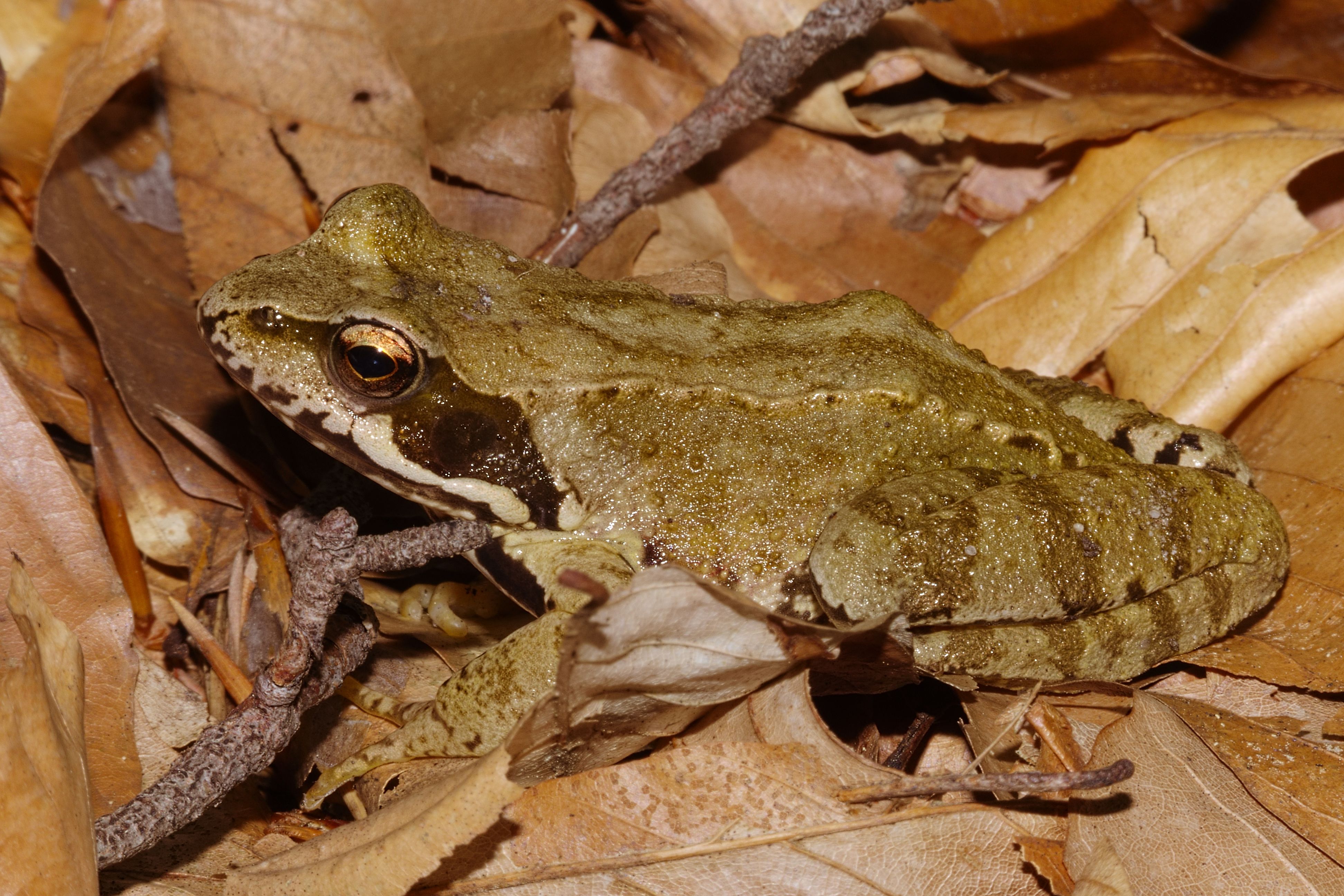The Common frog is a cosmopolitan and feels at home almost everywhere.
Description
The body length of adults reaches a maximum of eleven centimetres, with females growing slightly larger on average than males due to the somewhat later onset of sexual maturity. However, most individuals are between seven and nine centimetres in size and appear quite robust. The upper side can be yellow, red or dark brown in colour. As with all brown frogs, the two-sided, characteristically triangular temple patch with the eardrum inside is clearly dark brown in colour.
Habitat
In Austria, the Common frog is widespread and common almost everywhere. Gaps in its range can be recognised in the eastern lowlands. Spawning waters include a wide range of standing or slowly flowing waters. However, shallower, sunlit still waters such as small ponds and pools (including garden ponds), which rarely dry out, are favoured, as are cattle troughs in grassland areas.
Breeding call
The mating calls of the males, which are produced by two inner vocal sacs, are relatively quiet and can be described as muffled growling or humming, 0.25–1.5 seconds long. The calls can primarily be heard around midday and at dusk.
Example breeding call:
Wikimedia Commons Licence Odé Baudewijn CC BY-SA 4.0 international
Source: The text on the description and distribution is an excerpt from Wikipedia (https://de.wikipedia.org/wiki/Grasfrosch) and is available there under the licence "Creative Commons Attribution/Share Alike". Status: 10 July 2023. The text on the call consists of excerpts from Wikipedia, adapted from "Die Amphibien Europas: Bestimmung, Gefährdung, Schutz" by Nöllert & Nöllert, Franckh-Kosmos Verlag 1992.

 DE
DE  EN
EN 









